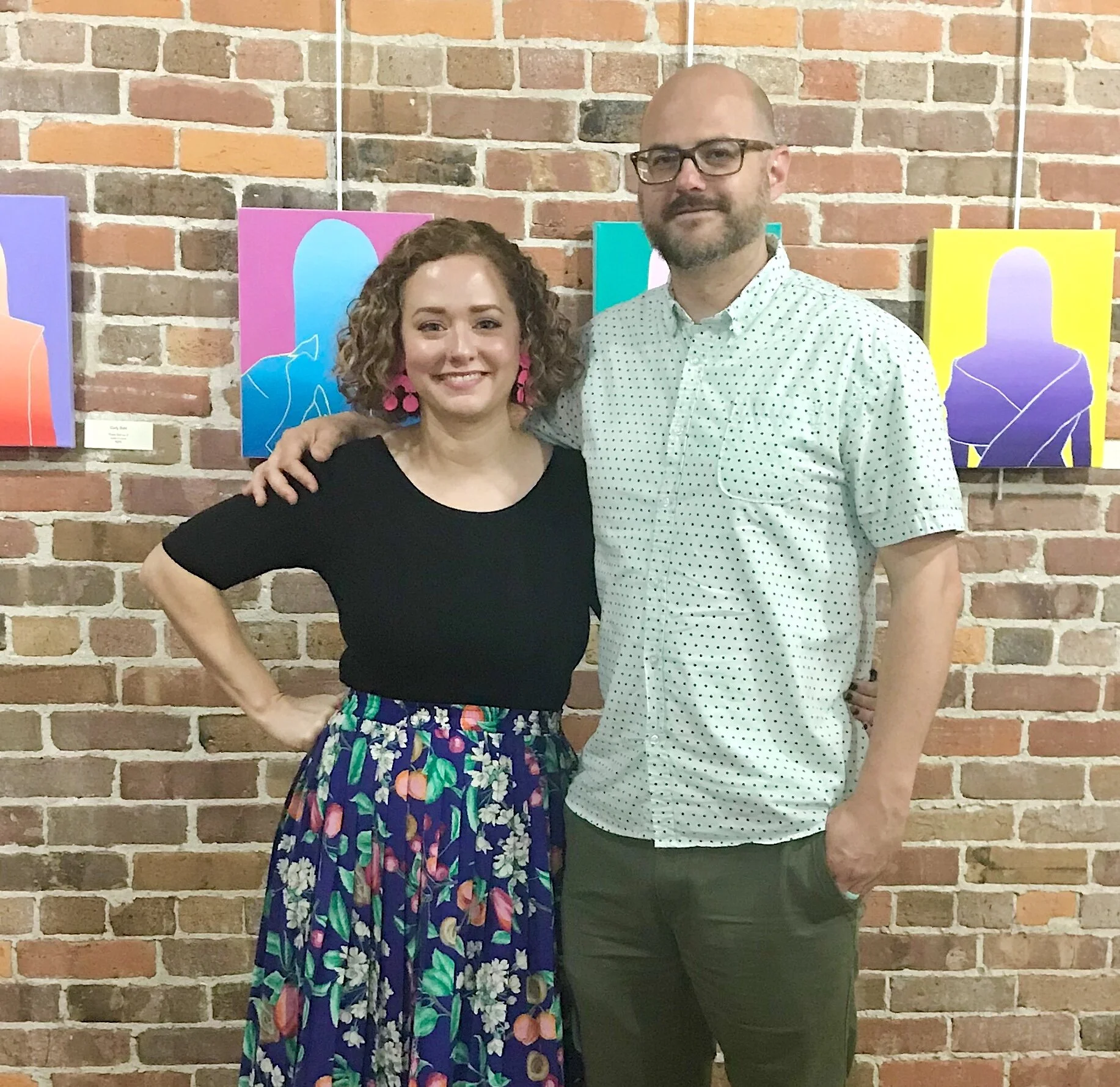Interview with artist Shelley Gentry
Shelley Gentry has always been drawn to art and design – and to people. She grew up in Arkansas and attended Hendrix College, where she earned a B.A. in Humanities with an emphasis in Art. A few years later she earned an Associate Degree in Interior Design from the Harrington Institute of Design in Chicago. Her love of nature and color come through in her vibrant yet sensitive paintings. Shelley is a full-time artist and managing partner at the Art Group Gallery in Little Rock. Her works can be viewed at the Art Group Gallery, shelleygentry.com, and at her creator page at Wescover.com.
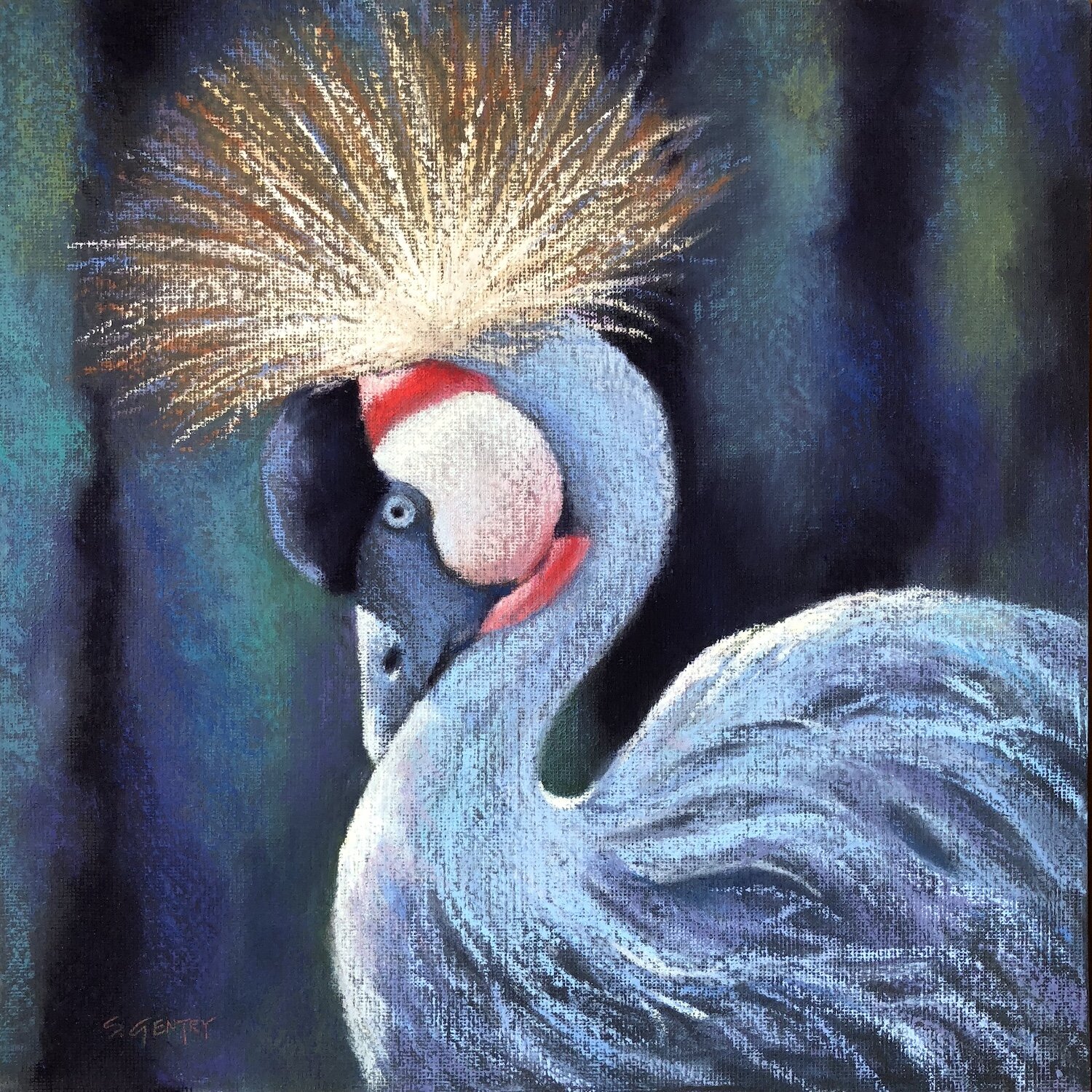
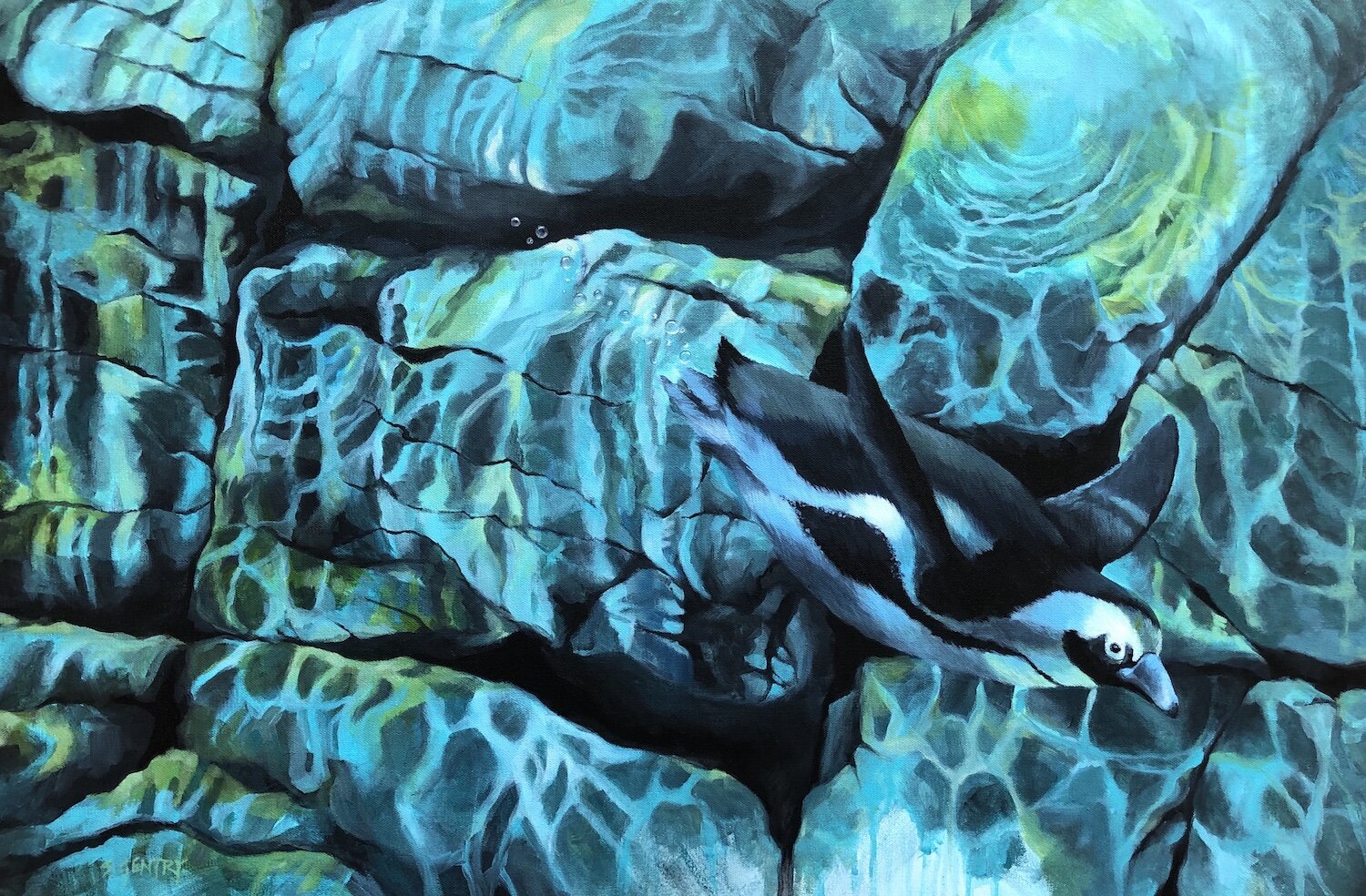
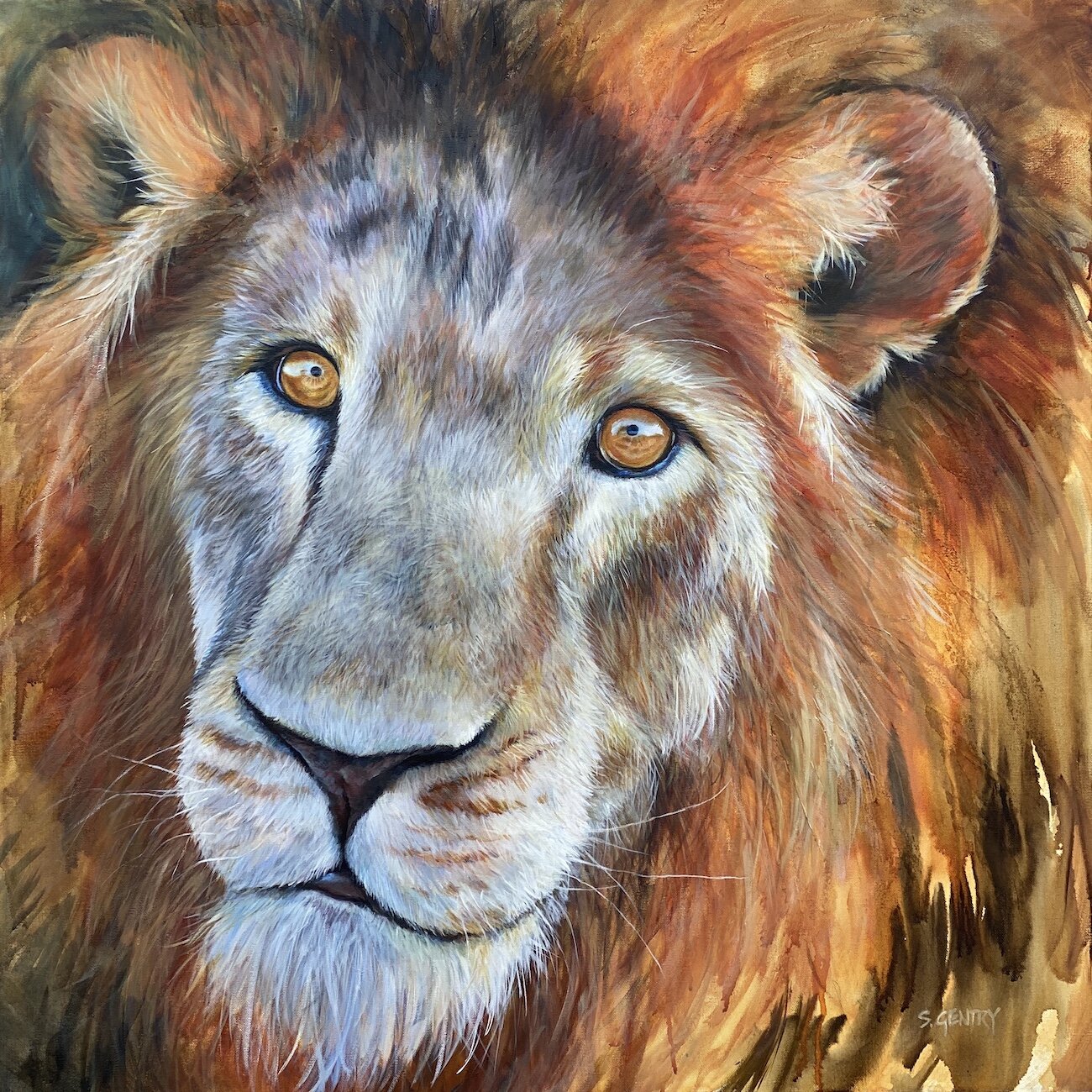
AAS: Soon after graduating from Hendrix College, you ended up in Chicago and worked as a designer at an architectural firm before returning to Arkansas. Talk about that time in your life and how it might have shaped the artist you are now?
SG: After college, I wanted to pursue an art-related career that incorporated my fine arts background, my love of interacting with people, and my affinity for space planning/problem solving. A career in commercial interior design checked all of those boxes. After getting a degree in interior design in Chicago, I interned and then was hired as an interior designer at Perkins & Will, where I prepared presentation drawings for potential clients and worked on teams designing large commercial installations. At the time, each presentation drawing was a one-of-a-kind original, so I definitely made use of my skills as an artist! Looking back on those years, I realize that I gained valuable work experience related to perseverance under pressure, working as a team member, balancing time spent in the business of art with time spent in the creation of art, and creating a healthy balance between work life and personal life. In terms of my artistic style, I see the architectural influence from my Chicago days in the shapes and structure I apply to my abstract paintings, in particular. As a side note, my signature on paintings these days reminds me of the hours I spent practicing architectural lettering in design school, although it no longer meets the standard that was required then!
AAS: You work in both acrylic and pastel and some mixed media. What makes you decide to use any particular medium or combination of media in a painting?
“As an artist, creative use of surfaces and exploration of unique techniques is what keeps me energized and inspired!”
SG: Yes, acrylics, pastels and mixed media are tops on my list, but the list has also included watercolors, oils, even encaustics, in the past! I guess I’ve never met an art medium that I didn’t like! For me, deciding which medium to use is like a carpenter choosing which tool to pick up for a building project; we pick the one that we think will do the best job for the project at hand! Acrylic paints are my favorites for their versatility, the wide range of effects that can be achieved by using acrylic mediums or gels, and honestly, their easy clean-up. Acrylics also work well with my mixed media pieces, especially those with collaged materials, because they dry quickly and I can easily create layers on the painting.
These days, when I want a change of pace from acrylics, I turn to soft pastels. Just getting out my sets of pastels and looking at the array of colors delights me. The strokes created with soft pastels glow on the paper in a unique way and mixing up my art practice by using a solid, rather than a liquid, form of pigment is fun! I often create a hand-textured surface when I use pastels. For instance, in Long-necked Beauty #1 [see above], I sealed the panel, applied a layer of pumice gel to give it the grit that pastels need to grab the surface, and then pressed a piece of window screen into it and let it dry. When I removed the screen, the resulting pattern created a unique texture that added interest to the piece. As an artist, creative use of surfaces and exploration of unique techniques is what keeps me energized and inspired!
Choices, 24” x 36”, acrylic on canvas
AAS: Long-Necked Beauty #1 took the First-Place award at the Arkansas Pastel Society Members Show in 2018 and Windows to the Soul – Chimpanzee was selected from an international call for entries for publication in AcrylicWorks 5: The Best of Acrylic Painting. Just last month your painting, Choices, was selected from over 1,200 entries for inclusion in the 2020 Spring International Online Exhibition of the National Oil and Acrylic Painters Society. Congratulations! These must be very exciting times for you.
SG: Yes! Every time I receive a “Congratulations!” email, it’s a cause for celebration; however, the awards/acceptances are matched by “I regret to inform you…” emails, so I think it’s important to focus my energy on the excitement I feel at the start of each painting project and the prospect of passing along some joy to others through my art. You can never predict which subject line you will receive in response to competitive submissions.
Windows to the Soul - Chimpanzee, 24” x 30”, acrylic on canvas
AAS: What is it about the gaze of an animal that inspires your wonderful animal paintings?
SG: If I had to sum up my artistic aspirations with one idea, it would be to foster connections in the world. As an animal lover, my desire to promote connectivity extends to animals as well as humans! I painted a series of animal paintings titled “Windows to the Soul,” in which the subjects were all gazing directly at the viewer. There is something about looking directly into the eyes of another creature that promotes an emotional connection and for that reason, I choose that orientation with my animal paintings whenever possible.
“I am drawn to texture in the world around me, especially in nature and in interior settings.”
Sand and Stripes, 18” x 18”, pastel on sanded paper
AAS: Texture seems, at least to me, to be a big part of your style. I see it in the animal fur and especially in Sand and Stripes and Resurfacing. Is texture something you are conscious of or does it just happen?
SG: I am drawn to texture in the world around me, especially in nature and in interior settings. With my background in interior design and with landscape gardening as a favorite hobby, I suppose it makes sense that I admire the textures and patterns around me. In my painting style, I am referring more to a visual texture than a tactile texture, but both are appealing. The towels’ visual texture is achieved through layering the pastels in Sand and Stripes although the painting’s surface is smooth. In Resurfacing, there is visual as well as tactile texture added to the piece because the inspiration behind that painting called for a tactile layering of the paint on the canvas.
Purple Passion, 40” x 30”, acrylic on canvas
AAS: I read in your bio that you LOVE the color purple. Do you have an emotional (or spiritual) connection with purple?
SG: I connect with the color purple on several levels. First of all, it’s my favorite color in the landscape. The lavender clematis, purple iris, vitex tree, and purple lacecap hydrangeas in my garden are among my favorites. Next, I have been fortunate to have friends who have taught me about color psychology as it relates to spiritual energy. Although I am by no means an expert, I have learned that the color purple (violet) brings to mind thoughts of oneness, self-awareness, and peace. I aspire to be more aligned with these concepts so purple is a reminder of that goal. Finally, purple is a blend of other colors and I like the symbolism associated with the idea that beauty comes from the mixing of distinct colors.
AAS: You describe yourself as a painter of abstracts and contemporary realism. Do you enter your studio every time with a plan of what to paint?
SG: Well, I am definitely a “planner” by nature, but I can’t say that my studio time always goes as planned. Maybe that’s why the diversity of my approach suits me so well – I always have options when it comes to pursuing one direction or another! With my realistic works, I love the challenge of recreating something I have seen in a way that causes the viewer to stop and take a closer look at it – see the “extraordinary” in it. There is a “Can I get it right?” challenge in this case and that appeals to the analytical side of my brain. With my abstract works, it’s about sharing my emotions – I feel most exposed here – in hopes that someone else will relate to it as well. There is no “getting it right” in the traditional sense, so the challenge is in being able to translate abstract concepts into visual imagery in a way that feels authentic to me.
I have described my studio as “the studio of the dueling easels,” because I frequently have an abstract painting in progress on one easel and a more realistic piece on another. The “dueling” adjective is not meant to imply conflict, but rather two approaches competing for my attention! When I get tired of working on one, I can turn my back on it for a while and paint on the other. This dance back and forth keeps me balanced in the studio. I can’t imagine giving up either practice and have recently come to fully realize that I don’t have to!
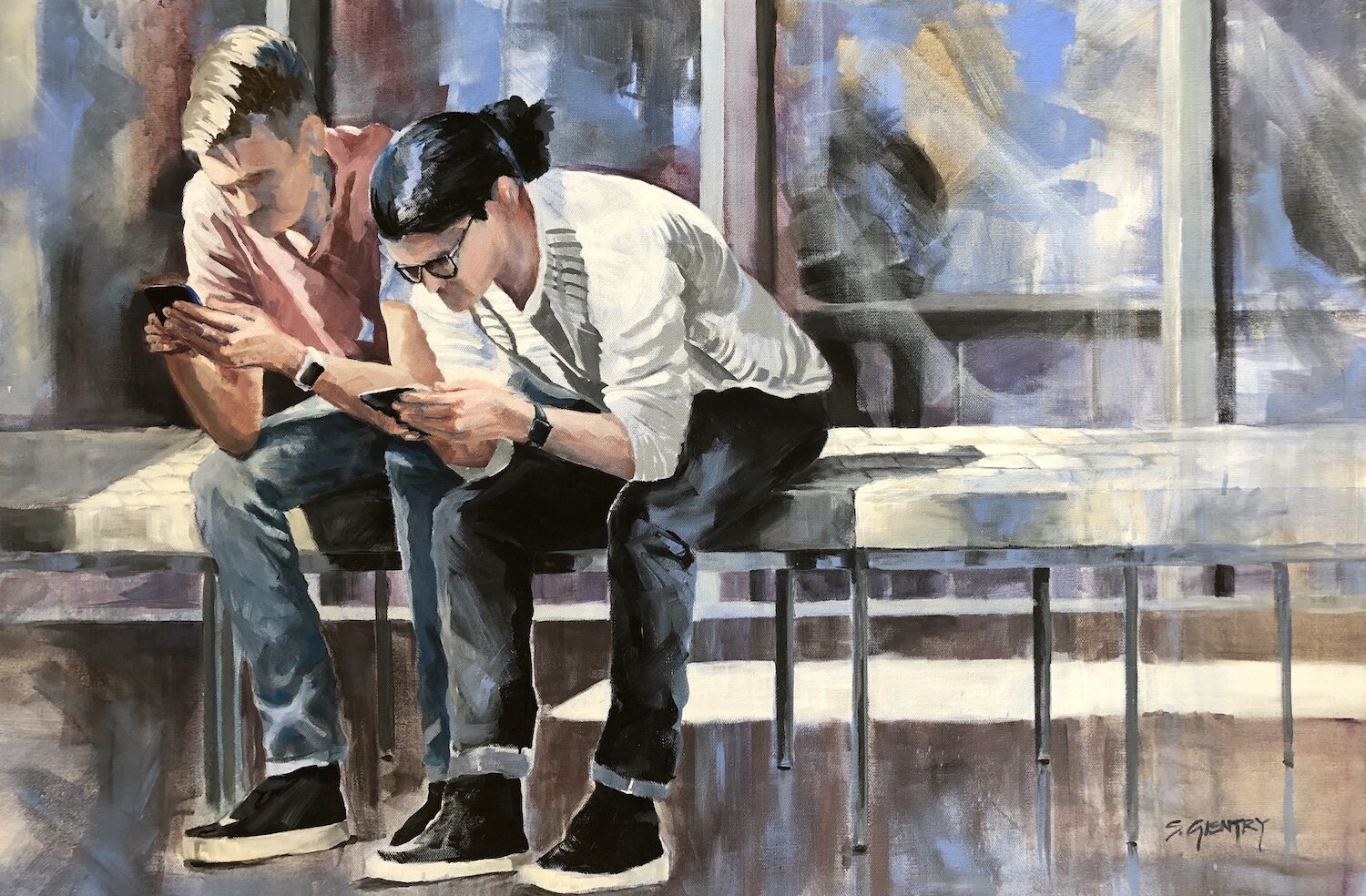
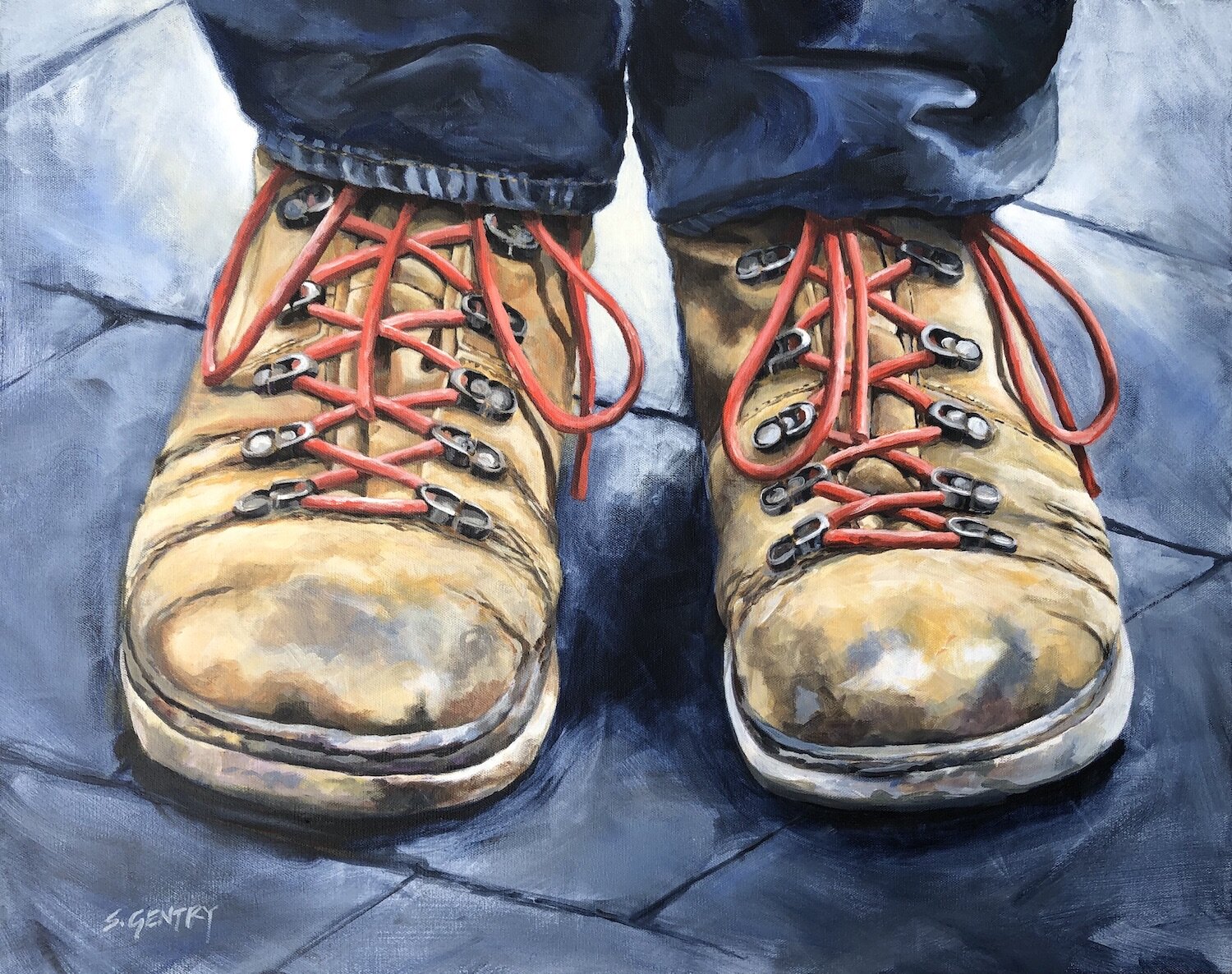
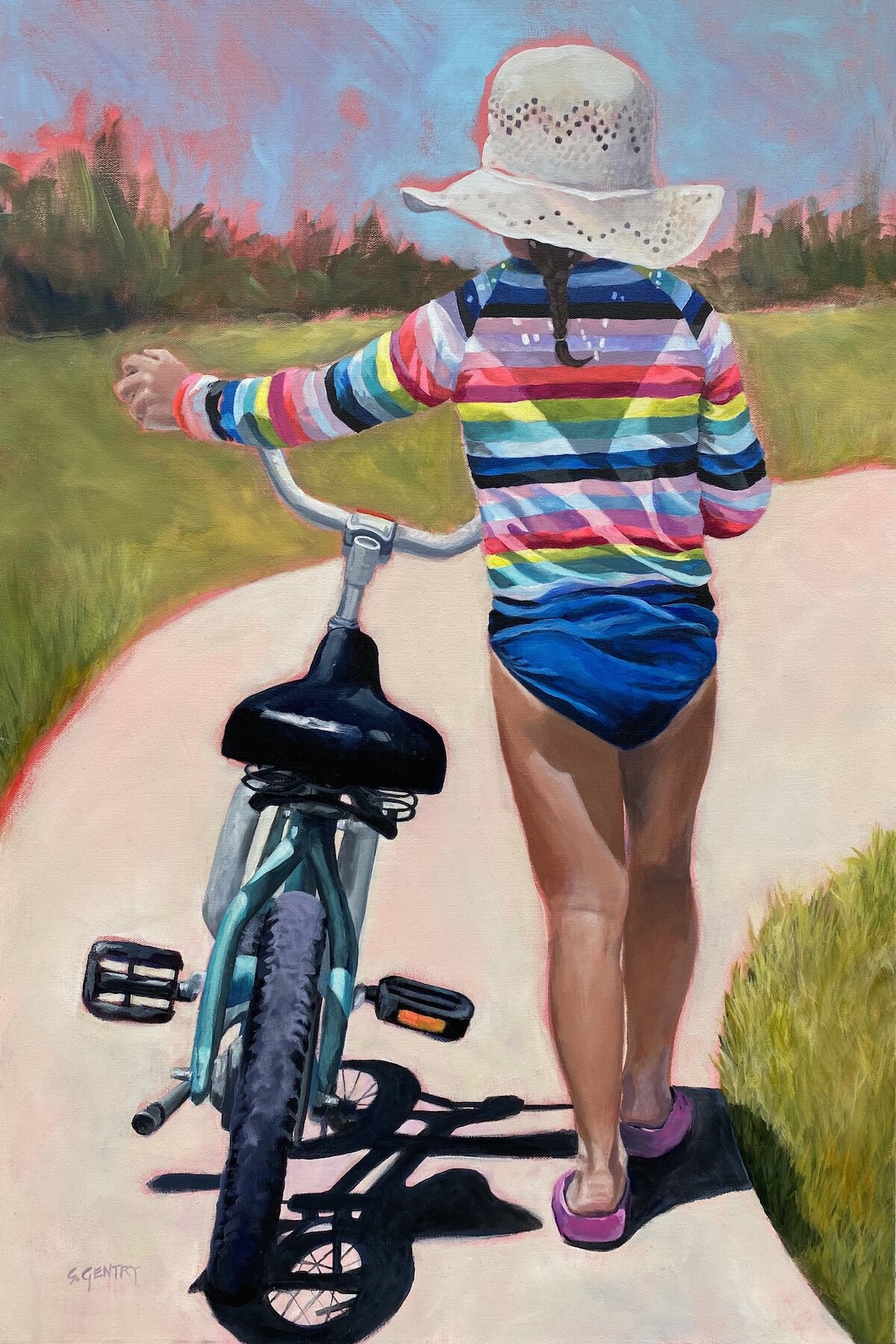
Heart of the Matter, 48” x 48”, acrylic on canvas
AAS: I think my favorite painting is your abstract The Heart of the Matter. It pulses. It beats. It has rhythm. And it has hidden bodies! How did that work come about?
SG: People often ask me, “Do you find it hard to part with your paintings?” and usually, my reply is “There are always more paintings in my future, so I have to make room for them.” However, The Heart of the Matter is one that I had to think about before selling. I generally have several inspirations at play in my abstract works and this one is no exception. The phrase, “heart of the matter” can mean different things, i.e. a core principle, a belief that you hold dear, an emotional response to a situation, and even medical issues centered around the physical heart. Each of these meanings factored into the creation of this painting on a personal level for me, and hopefully the couple who purchased it have attached their own emotional associations to it.
“With my abstract works, it’s about sharing my emotions – I feel most exposed here – in hopes that someone else will relate to it as well.”
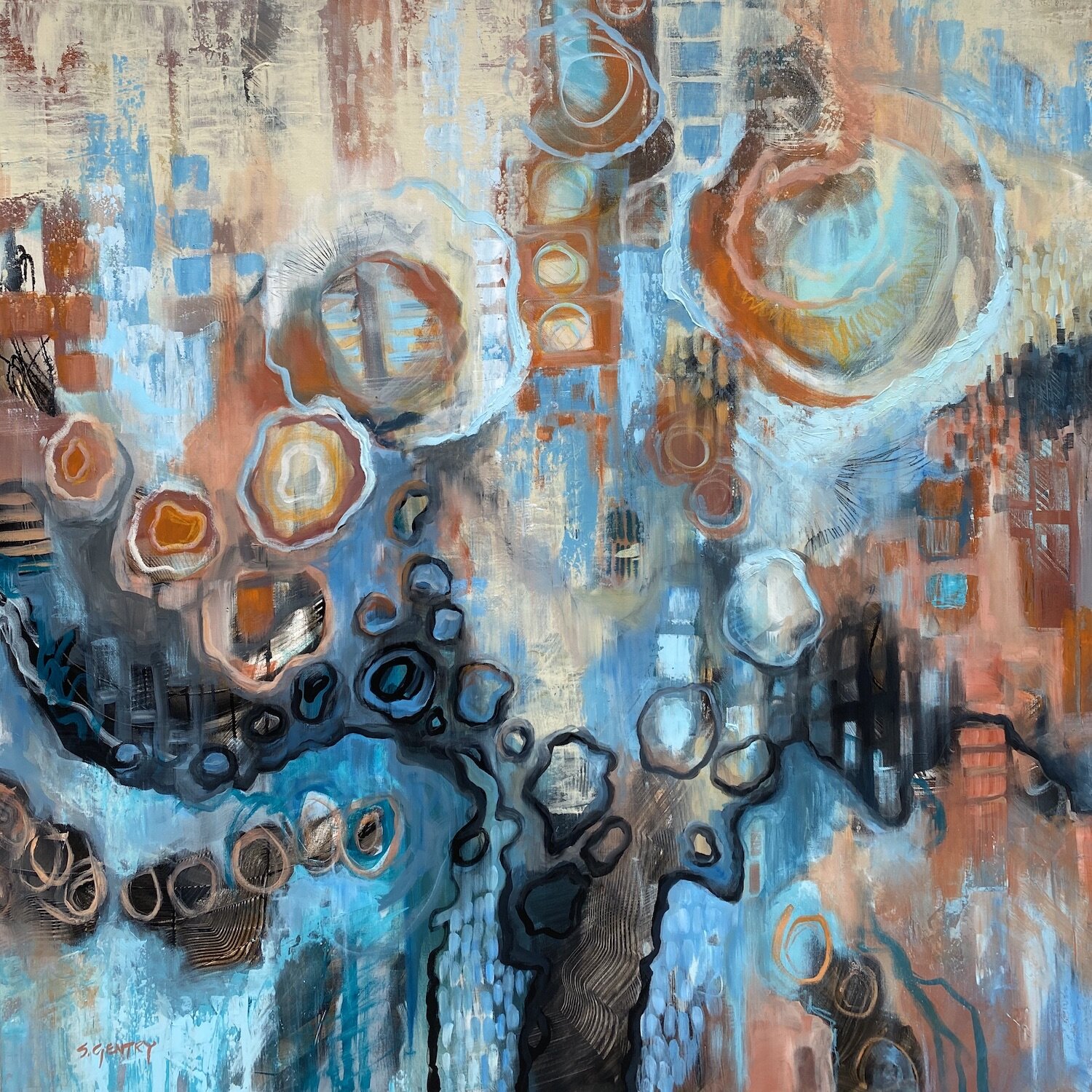
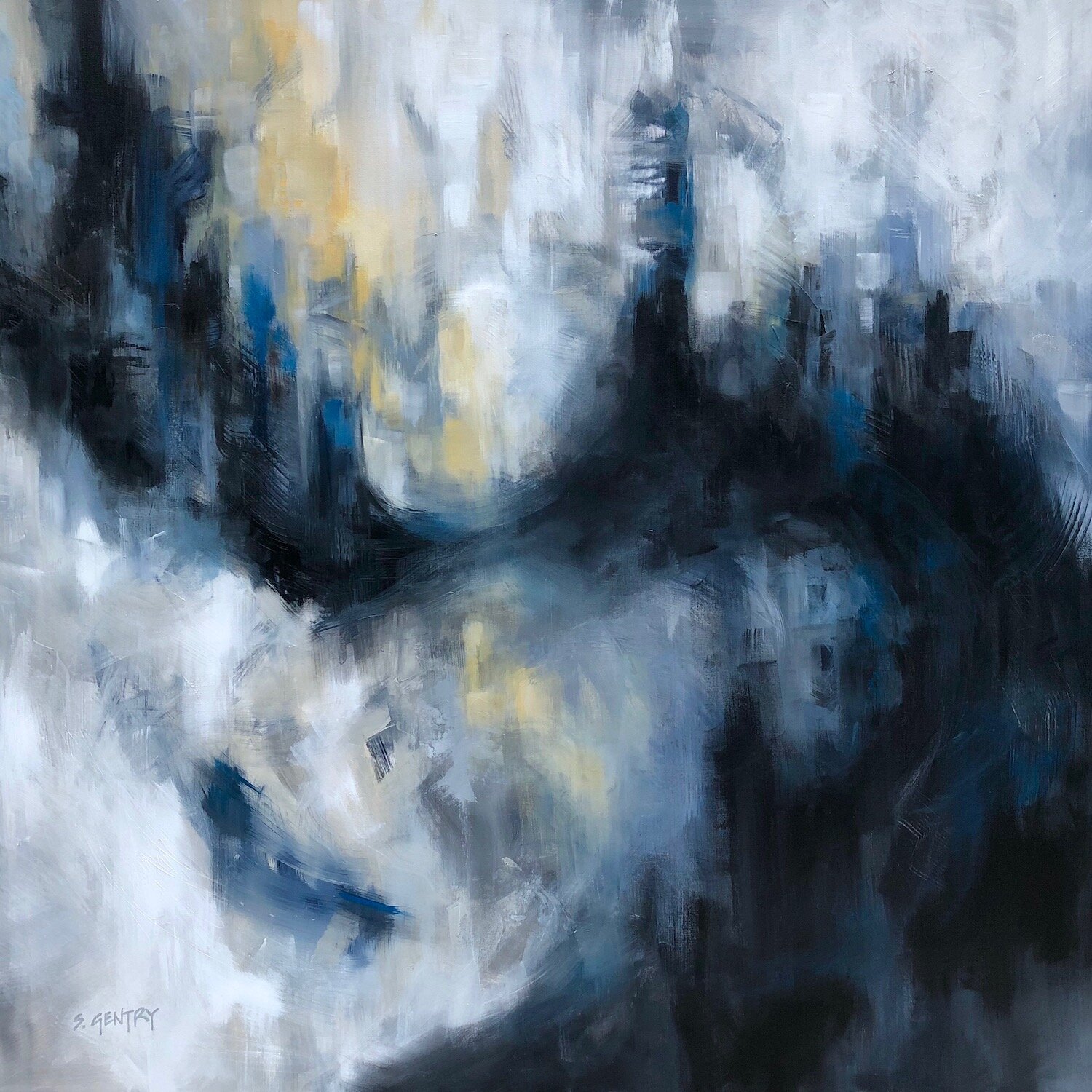
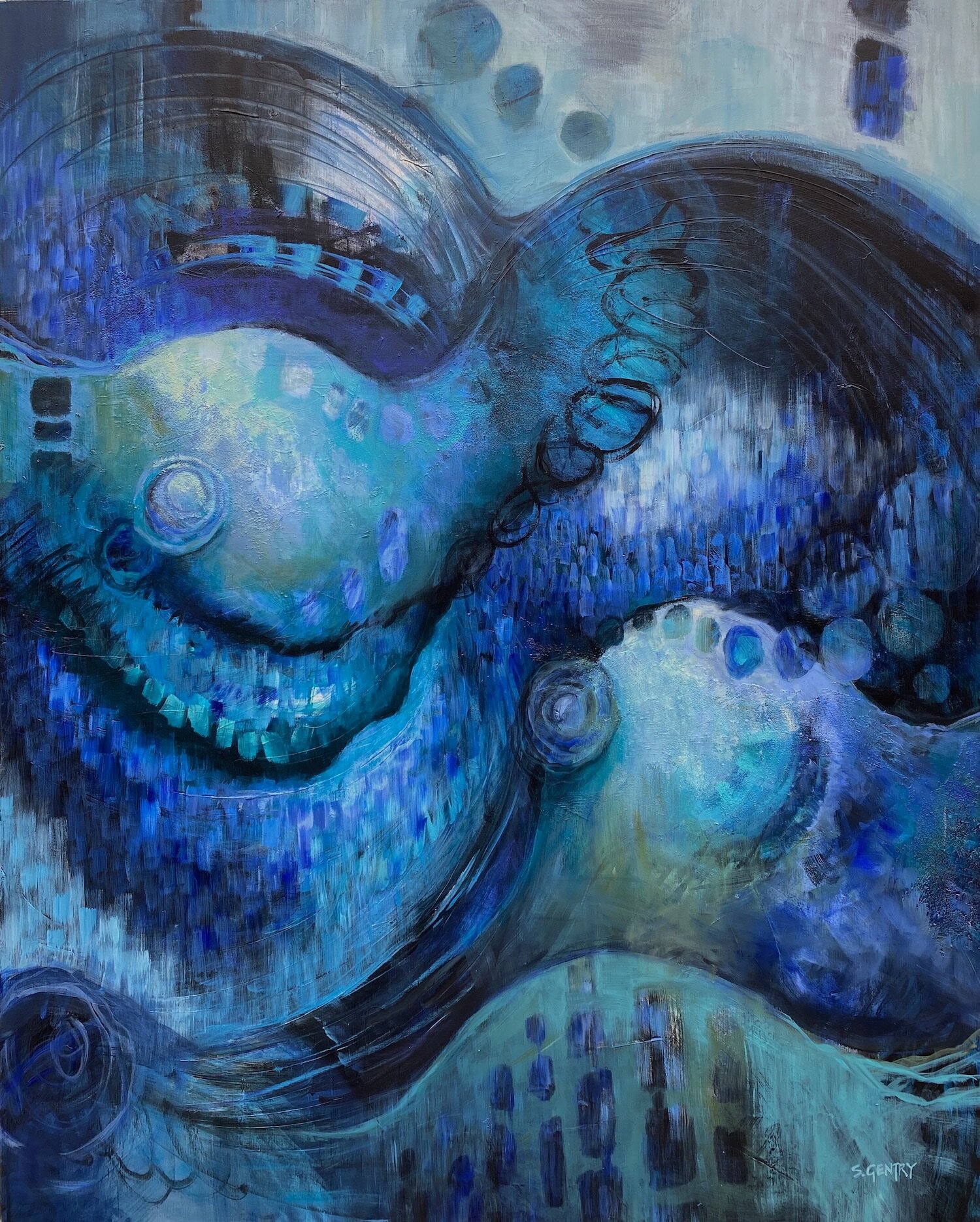
AAS: As the art world grows exponentially in the direction of online sales and a web presence becomes more important in sustaining your art business, how have you responded to this demand?
SG: As an artist who is definitely a “people person,” I embrace the opportunity to cultivate relationships with others on a wider scale than is possible on a face-to-face basis. Although in-person communication is definitely preferred, I am excited by the opportunities that social media provides for interaction and exposure to the global community. I am certainly classified as a beginner in developing my online art business, but I have fun with it and feel that pursuing it is a necessity for any artist who wants to stay connected with the public. For instance, I look at my Instagram feed as a visual story that not only acquaints my followers with what I am painting, but who I am as an artist – a behind-the-scenes look at my studio life. What is lost in face-to-face interaction, I try to make up for with eye-catching photography and videos that leave you feeling like you know who I am. That’s what I find appealing in the list of artists I follow on social media!
Recently, I set up a creator page on wescover.com, which offers potential buyers a look at interior installations in which my paintings are hung on the client’s walls. It is another way to connect clients with information that increases their comfort level in purchasing my art online.
AAS: You are a member of the Art Group Gallery in Little Rock, which opened back up this month, so you spend a lot of time with the public. How has the art buyer had to adapt in these weird times? What do you think they are looking for in a gallery these days?
SG: I have been associated with the Art Group Gallery for almost 4 years now, and have served on the management team for the past two years. Currently, we are focusing on adapting to the rapidly-changing art marketplace, especially in light of the Covid-19 situation. Today’s art collectors have the option of purchasing and receiving art without ever leaving their homes, so we have to assume that when someone walks into our gallery to shop for art, they value a positive face-to-face experience. At the AGG, we pride ourselves on being a friendly gallery, with a relaxed, welcoming environment. These days, that positive gallery experience also includes considering safety measures such as wearing masks, sanitizing surfaces, and being mindful of the number of clients in the gallery. For the customers who prefer to shop online, we are working on refining our website and streamlining the process for online purchasing to meet the increased demand that we are experiencing. I think art buyers can have the best of both worlds these days in that they can confidently buy art remotely or in the case of our gallery, they can have the experience of purchasing art from the artist and benefiting from the face-to-face interaction that occurs there. It is a common thread in my responses to the questions throughout this interview, but once again, it’s all about connections. Today’s art collectors can choose which type of connection they prefer.

